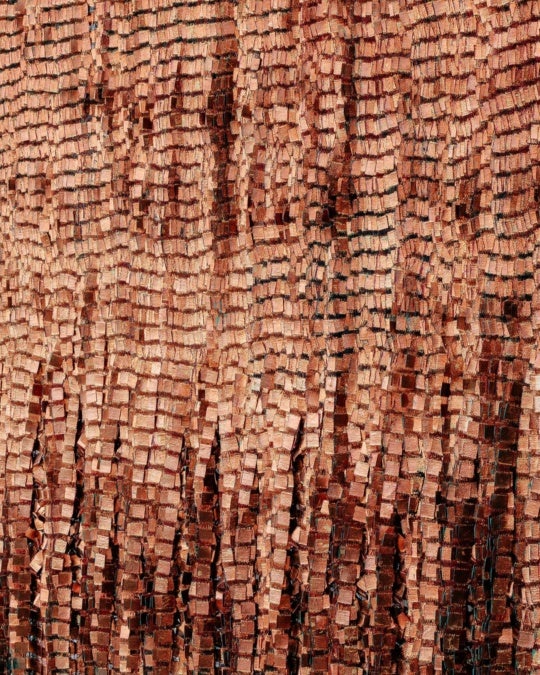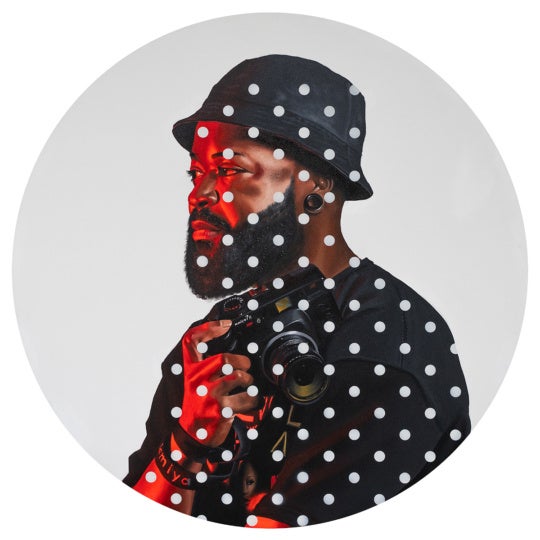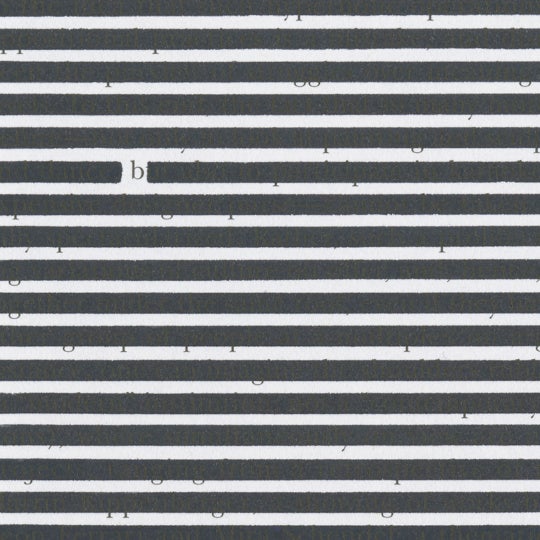
How bizarre is it that the twentieth century’s most famous fine art figures can be unknown to the majority of people? Barney, Beuys, Hesse, and Hammons slip right under the radar of mainstream awareness, while being upheld as fearless gods to us art initiates. Mark Rothko, the subject of Theatrical Outfit’s currently running play Red, is one such god. His rust-and-black-hued paintings of fuzzed-out squares are prime icons of Abstract Expressionism. I sat in the Atlanta audience before the play began, feeling like an art culture insider as I explained to my date and others around me who the hell Rothko was. But that’s exactly what this play attempts to do: present, without escape, the real intensity of an overbearing art character, Rothko. Although today’s general audiences may carry romanticized and somewhat outdated myths about what artists are like in their studios, I think they may ultimately be unsympathetic to or even bored by the intellectual and emotional fierceness exemplified in this superb play. The angst and tough love of this art world is indeed outrageous, badass, and out of touch.

Bravely, the play never changes set and does not break for intermission. We are warned from the outset several times that it will be an hour and fifteen minutes without a rest. Thus, the director David De Vries, firmly establishes a feeling of insularity. Cleverly, the audience is rather stuck inside the dim interior of the artist’s brick work space. Rust-red canvases (which represent well the actual work) are strewn about, a single line of light illuminates a real dripping red spill of paint, foreshadowing blood and suicide. The windows have been blocked off but light seeps through in jagged lines across the floor. There is a fifties record player marked with a pattern of paint prints where Rothko has repeatedly touched it. His is a beautiful prison, indeed.
There are only two characters in this play. Seasoned and successful Rothko (played by Tom Key), who hilariously refers to himself in the third person, and Ken (played by Jimi Kocina), his young studio assistant, an aspiring New York City painter, fresh out of school. They have a lot in common. Both have been affected by tragedy, which may be a statement in itself about artists. As the newbie with his greaser hair and penny loafers is indoctrinated, the audience also acclimates to Rothko’s deep and dark reality. Playing on an old cliché, the actors stand forward at center stage pretending to ponder an invisible painting. In his role as Rothko, Theatrical Outfit Director Tom Key says, “Let it work on you…engage with it…lean forward…you must be empathetic.” The artist has constructed quite a lot of requirements and conditions for the viewing of his paintings, which is all very demanding and unrealistic to the outsider. But, of course, this is his brilliance. He attempts a great feat of illumination and melancholy through carefully selected color fields. This is why natural light has been forbidden. Rothko paintings are designed to pulsate in the dusky light.

Rothko’s life is climaxing. He is past midcareer. He is famous. He is threatened by the rising generation of young pop artists. Stella, Johns, Warhol, and Lichtenstein bite at his heels with bright graphic “non-serious” work, as opposed to his own morose contemplations. He advises Ken that “courage in painting is facing the previous masters,” but the aging artist finds himself a master facing the hungry young lions. Most agitating of all, Rothko works on the pivotal Seagram Murals commission for the Four Seasons Restaurant. This project is dear to his ideals of working with space and light. Rothko chooses to ignore the bourgeois condition of the commission, until this hypocrisy is challenged by his young assistant, who has now graduated to searing levels of criticality. As completion draws nearer, Rothko finally leaves his studio to dine at the establishment, which provides a final blow to his dreams. He had bragged, claiming to be making “something that will ruin the appetite of every son-of-a-bitch who ever eats in that room.” But faced with being seen as a sell-out for all of immortality, Rothko sends back the money and pulls out of the prestigious project. He couldn’t stand to have the work reduced to “overmantels,” paintings “doomed to become decoration!”
Before his suicide in 1970, Rothko ultimately does complete a project that satisfactorily deals with space and light, and which aligns him rightfully as a precursor of artists including Donald Judd, Dan Flavin, and James Turrell: the Rothko Chapel in Houston is perfectly designed for contemplation and seems poised to stand as a testament to his vision. There his paintings resonate unscathed, where the natural light is forever controlled.
Like many greats, Rothko worked in an artificial world of his own making, one that had to be coddled if it was to be cherished. Absolute single focus is necessary for artists to achieve the sort of status of a Pollock or a Picasso. But to an average audience, this play’s artspeak and literary references alone might be unbearable. Red represents well such fetishization of artists and paintings without glorifying it. I am very glad for its lack of sentimentality. The myth of Rothko is represented without a lot of curvy lines. Harsh words are flailed, emotional eruptions are quelled, passion and anxiety are bottled up inside the gates of the studio, and Rothko’s works live on for the record.
The performance of the Tony Award winning play Red, written by John Logan and directed by David De Vries, has been extended through March 11, 2012 at Theatrical Outfit. For tickets visit Theatrical Outfit’s website.




